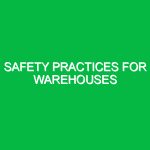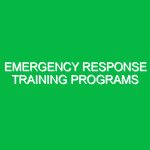When we think about the mining and drilling industries, it’s easy to be captivated by the allure of precious metals and fossil fuels. However, beneath this surface lies a world where safety is paramount. Safety in Mining and Drilling Operations is not merely a regulatory requirement; it’s a moral obligation that protects lives, health, and the environment. This article delves into the intricate web of hazards associated with these operations, outlines best practices for safety, and discusses the regulations that govern this critical field.
Understanding Safety in Mining and Drilling Operations
In the context of Health, Safety, and Environment (HSE), safety in mining and drilling operations encompasses a set of practices, guidelines, and regulations designed to protect workers and the environment. It involves identifying potential hazards, assessing risks, and implementing measures to mitigate those risks effectively. The importance of safety cannot be overstated; according to the International Labour Organization (ILO), the mining sector is among the most dangerous industries, with an injury rate significantly higher than that of other sectors.
Mining and drilling operations are fraught with risks, from cave-ins and equipment failures to exposure to toxic substances. A single oversight can lead to catastrophic events, not only affecting workers but also impacting surrounding communities and ecosystems. Therefore, understanding the potential hazards and implementing robust safety measures is vital for the industry.
Potential Hazards and Risks in Mining and Drilling Operations
1. Physical Hazards
Physical hazards in mining and drilling operations include slips, trips, falls, and equipment-related accidents. For instance, a miner working underground may slip on wet surfaces, leading to severe injuries. Moreover, the operation of heavy machinery poses risks such as crushing or being struck by moving equipment. The U.S. Bureau of Labor Statistics reported that in 2020, over 30% of mining-related fatalities were attributed to such accidents.
2. Chemical Hazards
Workers in the mining and drilling sectors often face exposure to hazardous chemicals, such as benzene, lead, and silica dust. For example, silica dust, which is released during drilling and mining activities, can lead to respiratory illnesses like silicosis. According to a study published in the American Journal of Industrial Medicine, long-term exposure to silica dust can result in significant health issues, including lung cancer.
3. Environmental Hazards
Mining and drilling operations can have profound effects on the environment, including soil erosion, water contamination, and biodiversity loss. The improper disposal of waste materials can lead to toxic runoff, affecting local water sources. A notable case is the 2015 Samarco disaster in Brazil, where a tailings dam failure resulted in the release of millions of cubic meters of toxic sludge, devastating the environment and displacing thousands of residents.
4. Psychological Hazards
The high-stress environment of mining and drilling can also lead to psychological hazards. Workers may experience anxiety, depression, or other mental health issues due to job pressure, long hours, and isolation. A study conducted by the Australian Institute for Health and Welfare found that workers in remote mining operations had higher rates of psychological distress compared to other industries.
Best Practices for Safety in Mining and Drilling Operations
1. Comprehensive Risk Assessments
Conducting thorough risk assessments is the first step in ensuring safety in mining and drilling operations. These assessments should identify potential hazards, evaluate risks, and prioritize them based on their severity. Engaging workers in this process can provide unique insights and foster a culture of safety. For instance, a mining company in Canada implemented a participatory safety program, resulting in a 30% reduction in workplace accidents within two years.
2. Training and Education
Regular training sessions are essential to equip workers with the knowledge and skills necessary to navigate hazards safely. Training should cover emergency procedures, proper equipment usage, and awareness of environmental risks. A real-life example can be drawn from a drilling company in Texas that revamped its training program. They introduced virtual reality simulations, allowing workers to practice emergency response in a controlled environment, leading to faster response times during actual incidents.
3. Use of Personal Protective Equipment (PPE)
Personal Protective Equipment (PPE) serves as a frontline defense against workplace hazards. This includes helmets, gloves, masks, and protective clothing. Ensuring that workers wear appropriate PPE at all times can significantly reduce the risk of injury. For instance, during a case study in an Australian mine, regular audits of PPE compliance led to a notable decrease in injuries attributed to falls and chemical exposure.
4. Implementing Safe Work Practices
Establishing and enforcing safe work practices is crucial for maintaining a safe work environment. This may include protocols for equipment operation, material handling, and emergency response. For example, a coal mining company in West Virginia adopted a strict lockout/tagout procedure to ensure that machinery was properly shut down during maintenance, resulting in fewer accidents related to equipment malfunctions.
5. Emergency Preparedness and Response
Preparation is key in the mining and drilling sectors. Companies must have detailed emergency response plans that outline procedures for various scenarios, including accidents, natural disasters, and environmental spills. Regular drills can help ensure that workers know their roles in an emergency. A notable incident occurred when a mining company in Chile successfully executed a rescue operation for trapped miners, thanks to their extensive preparedness and training programs.
Regulations and Standards Governing Safety in Mining and Drilling Operations
Safety in mining and drilling operations is governed by a myriad of regulations and standards, which vary by country. In the United States, the Mine Safety and Health Administration (MSHA) sets and enforces safety standards in mining. Similarly, the Occupational Safety and Health Administration (OSHA) provides guidelines for drilling operations. These regulations address various aspects, including worker training, equipment safety, and emergency preparedness.
Internationally, organizations like the International Council on Mining and Metals (ICMM) promote sustainable mining practices and safety standards. Their Sustainable Development Framework emphasizes the importance of safety and health, urging companies to adopt best practices to protect workers and the environment.
Conclusion
Safety in mining and drilling operations is a multifaceted issue that requires a proactive approach. By understanding hazards, implementing best practices, and adhering to regulations, companies can create safer work environments and protect their most valuable asset: their workers. The stories of lives saved and communities protected underscore the importance of prioritizing safety in every operation. Embracing a culture of safety not only benefits workers but also enhances the reputation and sustainability of the industry.


